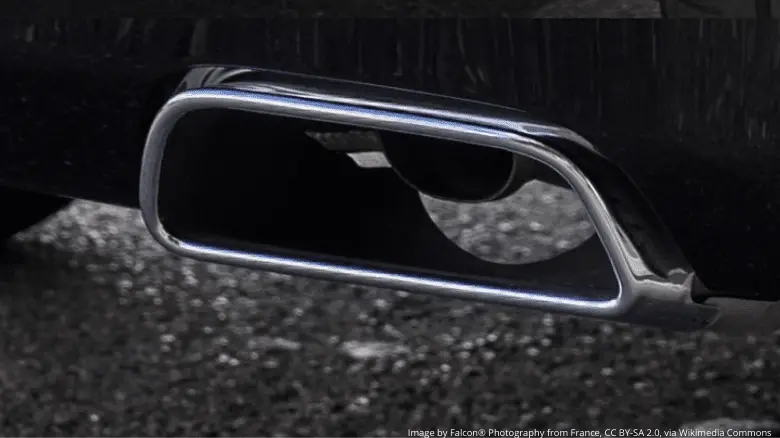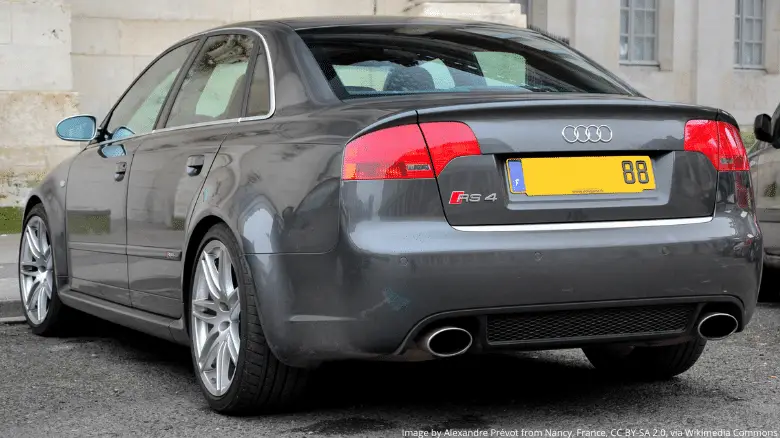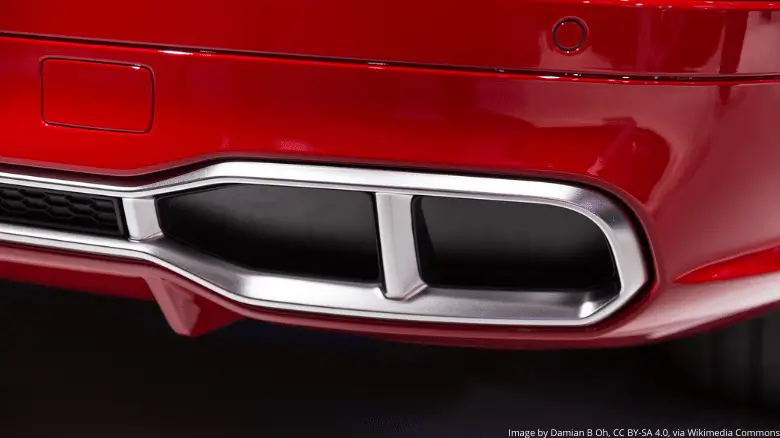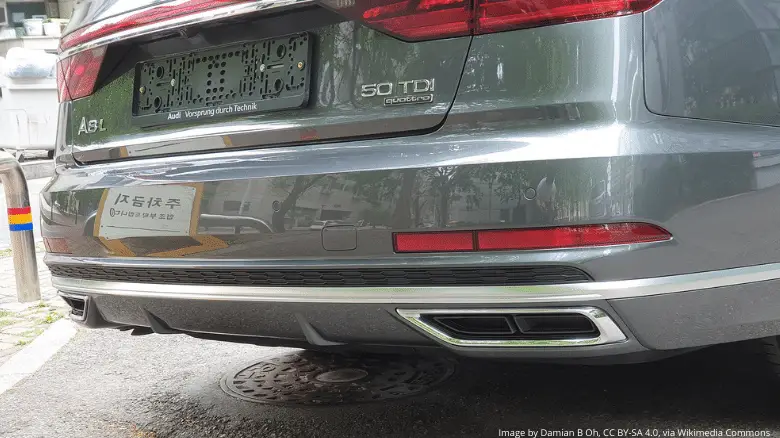Audi Fake Exhausts: Why Are They Used? (Explained)
Table of Contents
Table of Contents
Audi is a company that is known for its high-quality cars. But one thing that has always been a mystery about the company is why it uses fake exhaust tips on its newer models.
Some people have speculated that it’s just for show, but there may be something more to it than that. In this article, we will take a closer look at the science behind Audi fake exhausts and see why the company might be using them on its cars.
What are fake exhaust tips?
Fake exhaust tips are usually made of plastic or chrome-plated metal and are designed to mimic the appearance of a real exhaust tip. They are made to look like the exhaust pipes have a larger diameter than they actually do.
Many of these exhaust tips are not even connected to the exhaust system at all, they’re simply attached to the back of the car. The real exhaust pipe sits behind the fake exhaust tip, and often points downwards towards the ground.

Fake exhaust tips are often used for aesthetic purposes, as they can make a car look more powerful and aggressive. They are often used as an inexpensive way to dress up the appearance of a vehicle.
Why does Audi use fake exhausts?
Audi decided to utilize fake exhausts to give the impression of a more powerful engine, after strict emissions laws were brought in that meant they had to downsize the engines in their cars.
In the past, large engines produced more exhaust gasses and hence had larger diameter exhaust pipes. This is no longer the case, as emission regulations have forced manufacturers to produce smaller, turbocharged engines.
As a result, many Audis on the market today have much smaller exhaust pipes than their predecessors. This can make them look less powerful and aggressive.

By using fake exhaust tips, Audi is able to make its cars look like they have larger engines. This gives the impression of a more powerful and sporty car, which is likely to appeal to customers.
This is especially important for Audi’s performance models, as they need to stand out from the rest of the range.
The marketing team at Audi is well aware that car buyers are highly influenced by a car’s appearance. The whole package needs to look right in order for customers to take notice.
How do Audi drivers benefit from fake exhausts?
Audi’s are premium vehicles, and cost a lot of money to buy. Drivers are used to having large exhaust tips, so the fake exhausts help to maintain the look of the car as a luxury vehicle.
It may seem like a small thing, but it’s important to remember that luxury cars are as much about appearances as they are performance.
Audi owners can rest assured that their car still looks the part, even if the engine has been downsized.
Do other manufacturers use fake exhausts?
Audi is not alone in this practice. Many other manufacturers, including Lexus, Mercedes-Benz, and Porsche, have also been known to use fake exhausts on some of their models.
In fact, it’s been one of the most common ways for manufacturers to dress up the appearance of their cars since the emissions regulations came into effect.
Why aren’t people happy that Audi uses fake exhausts?
There has been much discussion in recent years about Audi’s use of fake exhausts. Some people argue that this strategy is deceptive and unethical.

Others, however, take the position that this is simply normal marketing tactics, and that people should not be bothered by what they consider to be a minor detail in an otherwise perfectly sound design.
In our opinion here at The Car Investor, the fact that Audi uses fake exhausts is not a good thing for a number of reasons.
First and foremost, by using fake exhausts, Audi misleads consumers about the true nature of its cars.
As well as the fake exhaust tips, the company’s marketing materials often features loud engine revving alongside dramatic acceleration, when in reality the vast majority of Audi cars are now powered by smaller turbocharged engines, or electric motors.
The practice is also considered a bit of a joke amongst car enthusiasts, and is perhaps one of the most universally hated features of modern vehicles.
We can understand why Audi would want to make its cars look more powerful, but the use of fake exhausts just makes it look like the company is trying to pull one over on its customers.

Anybody who knows their cars will know that those huge exhaust tips aren’t actually connected to anything. And the people that don’t know about cars, won’t care anyway!
Ultimately, the debate over whether or not Audi’s fake exhausts are acceptable comes down to a matter of personal taste, and whether it bothers you that the car you’re about to spend thousands on has fake components.
Are fake Audi exhausts here to stay?
Fake exhausts have been a controversial topic ever since Audi first introduced them, and many Audi enthusiasts are putting pressure on the company to stop this dishonest practice.
Up until recently it looked like fake Audi exhausts were here to stay; modern Audis continue to be fitted with them, and there was no sign that the company was planning to change its strategy anytime soon.
However, there have been rumors that some high-ranking Audi officials are starting to consider phasing them out.
Only time will tell if fake exhausts remain a permanent fixture on Audis, or if the company will eventually cave to customer demand. Either way, it’s sure to be an interesting debate among car lovers for years to come.
ABOUT THE AUTHOR
Adam Chinn writes about the intersecting worlds of classic cars, driving pleasure, and smart investment strategies. Starting his journey at 26, he’s proven that one doesn’t need to be wealthy to begin investing in classic cars.
Adam’s insights have been recognized on platforms such as MoneyInc, Swagger Magazine, and Top Speed.




1 thought on “Audi Fake Exhausts: Why Are They Used? (Explained)”
Not now buying an sq5 since discovering the 2024 edition is fitted with plastic exhausts!!
Rip off!!